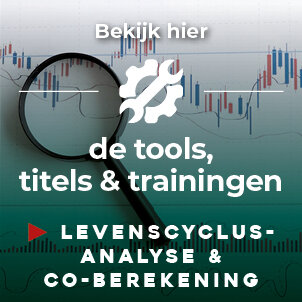Treasuring the trash
Gertjan de Kam - Design & development
When Gertjan saw all the amazing waste being thrown out each day, he thought ‘there must be another way.’ He began to study circular design and learned how to creatively reuse the remaining waste. Fast forward to 2020 and circularity is now the core business of VEPA the furniture factory.
In the past, wonderful new materials at VEPA were being discarded. The wood, textiles and metal left over from the production process were considered waste due to a lack of application for them. The metal, for instance, was being remelted in Asia and then, via a detour, repurchased by us. An absurd situation of which hardly anyone was aware.
Our first step was to reduce the waste stream by redesigning existing products. After going through our waste bins, we used what we had discovered as our basis for finding new applications for our products. For instance, we now use our leftover textiles as soundproofing for our walls, we process PET bottles into our chairs and we’ve designed new products made from residual materials that are sold under the brand name ZOOI (TRASH).
How do you go about your work as a circular designer?
At the start, I always ask myself: “Why am I designing this? What is the goal?” Then, for every product I design, I apply the following principles:
Produce local: to prevent pollution created by transport.
Buy local: I prefer European FSC or PEFC wood to bamboo from China.
Choose sustainable materials: the use of wood rather than steel results in a smaller direct footprint and, for us, the products last at least as long.
Design for a long life cycle: the energy and materials necessary for the product must be retained for as long as possible.
Design in a modular fashion with maintenance in mind: a part must be easily replaceable for maintenance, repairs or an upgrade. Maintenance is better than repair, repair is better than recycling.
Design timeless: trends come and go in rapid succession, and products quickly go out of fashion. Products should retain their value for as long as possible or even become more valuable with the passage of time. And this can be done if you only have to replace one part rather than having to purchase an entirely new product.
Design with aging in mind: consider how a wear pattern or erosion might add value to the design. A sanded vintage table or a table made of scrap wood, for example, gains added value through its worn appearance and patina
I see designers as ‘knowledge brokers’. For a good design, they will combine their knowledge of the market, standards, materials and production processes. The design is the link that forges a connection between demand and need.
Choices are made during the design process that determine the entire product life, including the end. Think about the choice of material, production method, cost, lifespan, functionality, modularity and so forth. You are not only designing the product, but also the associated waste. Imagine if every producer was responsible for his or her own product and got it back once it had reached the end of its lifespan. The world would be a very different place. I regularly review all the existing products and ask myself if I would be pleased if all our products were returned. The answer is yes. All the materials in our products are sustainable, easy to reuse and/or to separate after the end of their useful life.
Isn’t it more expensive to produce locally?
In the Netherlands, it’s mainly the labour that’s more expensive. The costs can be compensated by smart production methods. We have an ultramodern factory in Hoogeveen where automation, robotisation and craftsmanship go hand in hand. Materials and machines cost about the same everywhere. Taking out the transport piece offsets the labour costs and saves time. What’s more, you know that local production means production under good working conditions.
At VEPA, we don’t just make money by selling products. We use our production process to profit from the refurbishment and modification of existing products, including non-VEPA products. Knowledge is the key to success here. Because we design, develop and manufacture products in the Netherlands, we can directly apply our in-house knowledge and experience to create new products: whether making a client-specific product or modifying an existing one.
While working to become more circular, which obstacles do you encounter during the design process and how do you resolve them?
““You are not only designing the product, but also the waste.””
The lack of objective information about the sustainability of raw materials remains a stumbling block. In practice, “facts” often turn out to be pure marketing or mere half-truths. You can only figure this out by doing your own research. Whenever possible, I check with the supplier myself. But a lot of information about processes and materials can also be found objectively via the internet. In addition, it’s never desirable to glue or bond components together. You should always be able to separate materials after their use. Coming up with alternative methods can prove difficult and is often more expensive. You have to be able to explain this to clients who purchase your product while not necessarily benefiting at all from this.
Why has VEPA set up collaborations with other furniture manufacturers?
We’ve joined INSIDE/INSIDE to jointly achieve sustainability for our products. Applying the same standards as our industry peers facilitates product comparisons. It allows clients to choose products objectively, and you stimulate one another. Scoring lower than your competitor really encourages you to innovate and improve.
At the research lab Green Furniture Circle, everyone contributes case studies and we conduct research into such things as new materials and production techniques. Using this approach, we achieve results in areas that would not be addressed as a stand-alone production company because we’re fully committed to producing furniture, not to developing materials and production techniques. For example, felting our upholstery waste resulted in an excellent acoustic mat that absorbs sound far better than the polyether foam we had been using.
What would you like to pass on to other designers?
I think it’s critical as a designer to familiarise yourself with the production process: walk into the factory, talk to the employees and understand what’s happening around you. This prevents you from designing things that are impossible or difficult to make, such as products that are overly complicated or just not fit for purpose. In my view, a beautiful chair that doesn’t sit comfortably and for which no afterlife has been designed doesn’t make sense. It just stands abandoned in a corner until it’s thrown out.
The distance from origin to end product is increasing. I look at a lot of products and then play a little game, asking myself which products I would be able to repair. You’ll be amazed by your findings. Have you ever tried replacing a light bulb in your car? It’s hopeless! But really, we have all kinds of devices that are impossible to repair: TVs, telephones, drills, washing machines, coffee machines, etc. They’re no longer designed to be taken apart. We buy them with the sole intention of using them before tossing them out. I once spent six hours replacing a simple slide bearing on a tumble dryer. The whole machine had to be disassembled, and a lot of plastic click connections snap off when you try to remove them. Trying something like this gives you insight and the goal of doing a better job with your own designs. You have to be able to repair products if they break down.
Do you have any tips, tricks, tools or useful websites for other designers?
‘Products that last’, ‘Design of sustainable product life cycles’ and the ‘Routledge handbook of sustainable product design’ are all books every designer should read. I find the storyofstuff.org site to be inspiring. It provides clear and simple explanations for how chains work, where decisions are made and the role that each link plays.
VEPA is one of the most sustainable manufacturers of office and contract furniture in the Netherlands. As the only manufacturer in the sector, they construct all their products in their own domestic factories. VEPA is part of the Fair Furniture Group, a family of like-minded brands and people who share the same ambition: to continuously strive for new circular and sustainable solutions.













